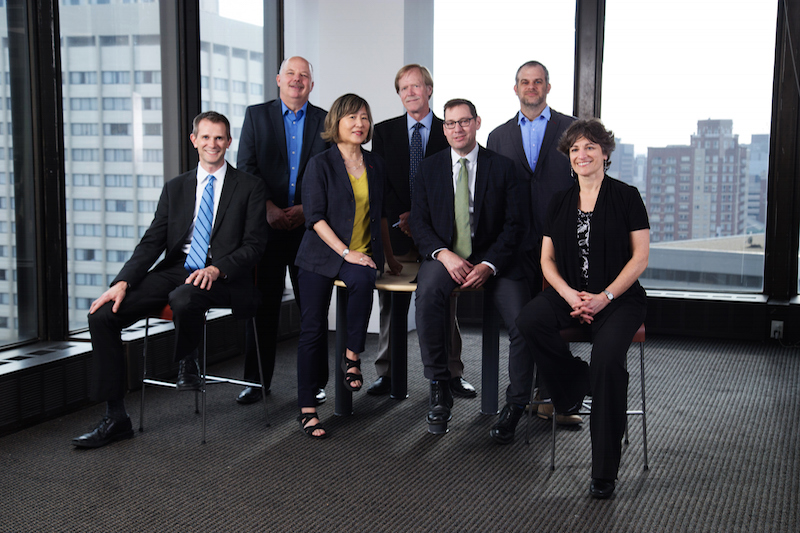The Washington, D.C. architectural and planning practice Quinn Evans Architects will expand to five office locations on May 1 when its acquisition of Baltimore-based Cho Benn Holback + Associates becomes effective.
Quinn Evans, founded in 1984, also operates from offices in Detroit and Ann Arbor, Mich.; and Madison, Wis. The new addition brings Quinn Evans’ employee count to more than 140.
The 30-person Cho Benn Holback, which was established in 1979, will remain at its current location, and operate under its name with the addition “a Quinn Evans Company.” No changes to its management or staffing are anticipated.
The two firms have portfolios in cultural, educational, civic, and urban infill projects, with an expertise in historic preservation and adaptive reuse. Cho Benn Holback + Associates has been recognized with more than 200 design awards, and is regarded for its design and revitalization work in Baltimore.
“Quinn Evans Architects is well known for its resourcefulness in urban planning and design, and that focus is what has inspired our own work through the years as well,” says Diane Cho, AIA, one of the firm’s founding partners. “We are looking to help rebuild and reinvigorate communities. Working together, we’ll have an opportunity to take our experience to other cities, and bring Quinn Evans’ perspective to our work here in Baltimore as well.”
Larry Barr, AIA, President of Quinn Evans Architects, views Cho Benn Holback + Associates as an ideal fit for Quinn Evans Architects in terms of staff, expertise, and portfolio. “I have long admired the thoughtful and creative approach reflected in their work—the caliber of design is consistently visionary and transformative. Projects like the Lillian Jones Apartments; the National Postal Museum; and Open Works, the state-of-the-art new maker space in Baltimore, are standouts.”
Both firms have completed a number of theater projects: Quinn Evans is currently designing the modernization of the 500-seat, 36-year-old Terrace Theatre at the John F. Kennedy Center for the Performing Arts in D.C., and Cho Benn Holback recently completed the $28 million renovation of Center Stage in Baltimore. (Whiting-Turner Construction was the GC on that project.)
Related Stories
Sponsored | | Oct 13, 2014
Think you can recognize a metal building from the outside?
It’s getting more and more difficult to spot a metal building these days. What looks like brick, stucco or wood on the outside could actually be a metal building in disguise. SPONSORED CONTENT
Sponsored | | Oct 13, 2014
Liberty Utilities protects installers with Viega MegaPress
Liberty Utilities of New Hampshire wanted a way to keep its installers safe without compromising the quality of their installations, which is why the utility provider decided to start installing Viega MegaPress. SPONSORED CONTENT
| Oct 13, 2014
Department of Agriculture launches Tall Wood Building Competition
The competition invites U.S. developers, institutions, organizations, and design teams willing to undertake an alternative solution approach to designing and building taller wood structures to submit entries for a prize of $2 million.
| Oct 12, 2014
AIA 2030 commitment: Five years on, are we any closer to net-zero?
This year marks the fifth anniversary of the American Institute of Architects’ effort to have architecture firms voluntarily pledge net-zero energy design for all their buildings by 2030.
| Oct 10, 2014
A new memorial by Zaha Hadid in Cambodia departs from the expected
The project sees a departure from Hadid’s well-known use of concrete, fiberglass, and resin. Instead, the primary material will be timber, curved and symmetrical like the Angkor Wat and other Cambodian landmarks.
| Oct 9, 2014
Regulations, demand will accelerate revenue from zero energy buildings, according to study
A new study by Navigant Research projects that public- and private-sector efforts to lower the carbon footprint of new and renovated commercial and residential structures will boost the annual revenue generated by commercial and residential zero energy buildings over the next 20 years by 122.5%, to $1.4 trillion.
| Oct 9, 2014
More recession-postponed design projects are being resurrected, says AIA
About three quarters of the estimated 700 firms that serve as panelists on AIA’s Architectural Billings Index (ABI) had delayed or canceled major design projects in response to recessionary pressures. Nearly one-third of those firms now say they have since restarted stalled projects.
| Oct 9, 2014
Steven Holl's 'intersecting spheres' scheme for Taipei necropolis gets green light
The schematic design has been approved for the 50 000-sm Arrival Hall and Oceanic Pavilion for the Taiwan ChinPaoSan Necropolis.
| Oct 9, 2014
Beyond the bench: Meet the modern laboratory facility
Like office workers escaping from the perceived confines of cubicles, today’s scientists have been freed from the trappings of the typical lab bench, writes Perkins+Will's Bill Harris.
| Oct 8, 2014
New tools for community feedback and action
Too often, members of a community are put into a reactive position, asked for their input only when a major project is proposed. But examples of proactive civic engagement are beginning to emerge, write James Miner and Jessie Bauters.
















